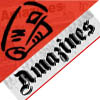|
Are you a person curious to learn about languages? Many people are willing to know about Latin origin and the history of foreign languages. And recently, we've seen many questioning about the old existence of Albanian. Are you also curious about it? If you are a person who wants to know more about when this language came into being and about its literature, then you're at the right place! Universal Translation Services aims to provide the best content but make sure to read it till the end to get the best understanding. At first, let's take a look at the Albanian literature! Albanian Literature Old Albanian literature dates back to the 16th and 18th centuries. And there was a time when it was Catholic religious literature. Albanian people can better explain the truth about Albanian literature. In 1709, these people belong farther south in the valley of the Shkumbin. It is a seasonal stream that lies near the old Via Egnatia, is approximately the boundary of the primary dialect division for Albanian, Tosk Gheg. The countries like United States, Chile, and Argentina, have a large number of Albanian speakers. In terms of Albanian literature, it mainly consists of two dialects i.e. Gheg in the north and Tosk in the south. Gheg and Tosk have been diverging for at least a millennium, and their less extreme forms are mutually intelligible. It also has sub-varieties. On the contrary, Tosk variety and seem to be related most closely to the dialect of Çamëria in the extreme south of Albania. These dialects resulted from incompletely understood population movements of the 13th and 15th centuries. Grammar and Structure The grammar of the Albanian language is much similar to other European languages. Nouns show overt gender, number, and three or four cases. Albanian nouns inflect for definiteness. Moreover, people write the Tosk dialect in the Greek alphabet but the Gheg in the Latin script. The Albanian alphabet is similar to that of Latin letters. Early linguistic influences loanwords attested in Albanian come from Doric Greek. The adjectives include quantifying expressions except for numerals. Verbs are roughly in number and have sub-varieties. In general, the grammar and formal distinctions of Albanian are reminiscent of Modern Greek and the Romance languages, especially of Romanian. The sounds suggest Hungarian or Greek, but Gheg with its nasal vowels strikes the ear as distinctive. As a whole, Albanian is a cosmic language because of its uniqueness. If you need more information about the Albanian language, feel free to contact us! Click here for more info: https://www.universal-translation-services.com/how-old-is-albanian-language/
Related Articles -
translation, Translation services in USA, translation agency in USA, Translator,
|



















